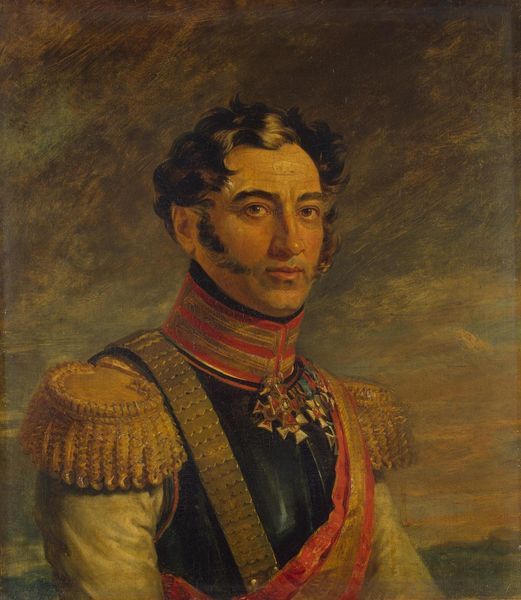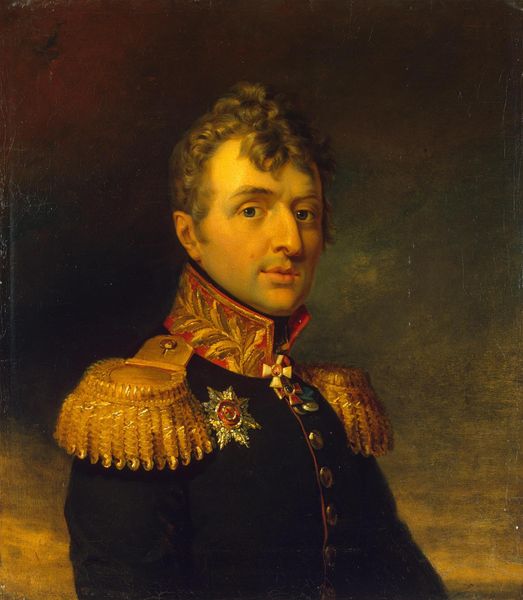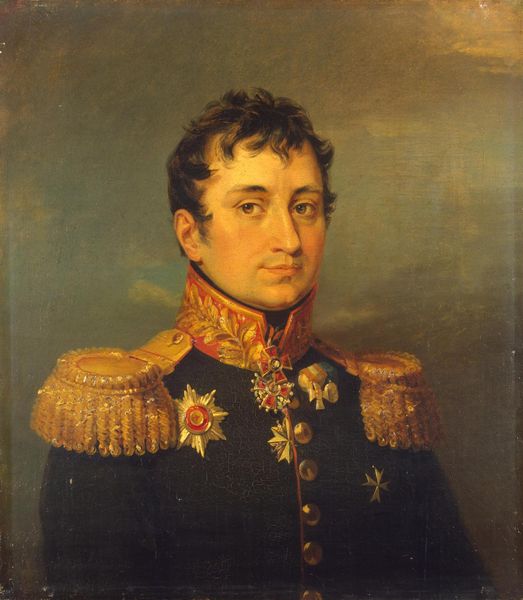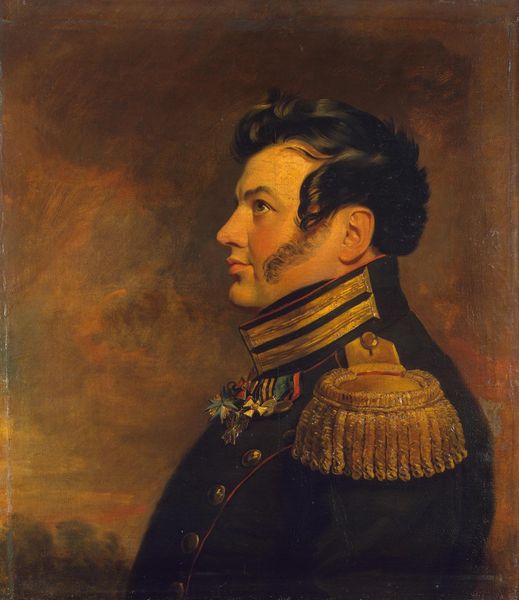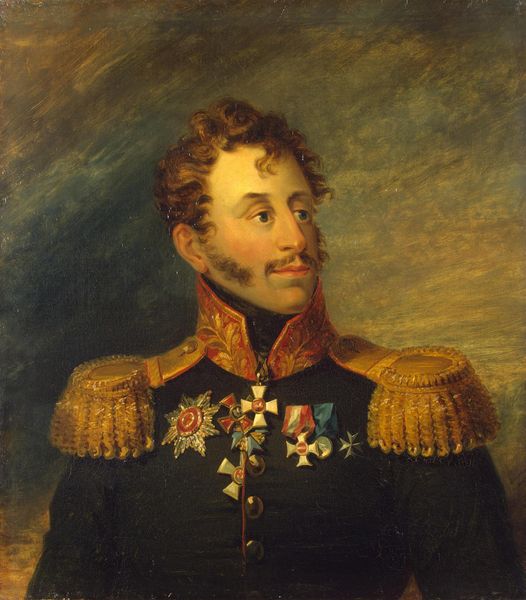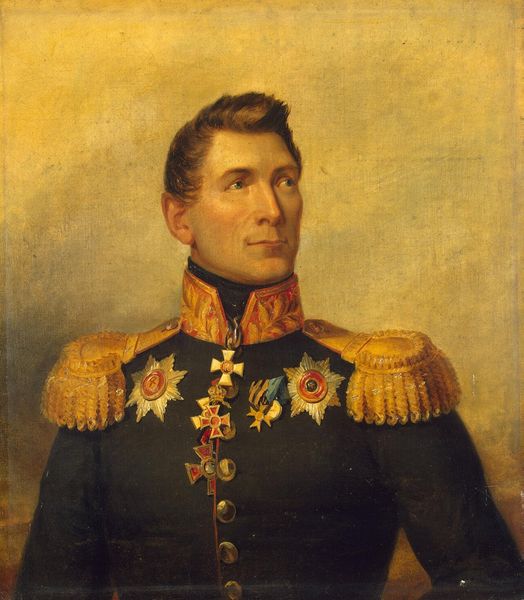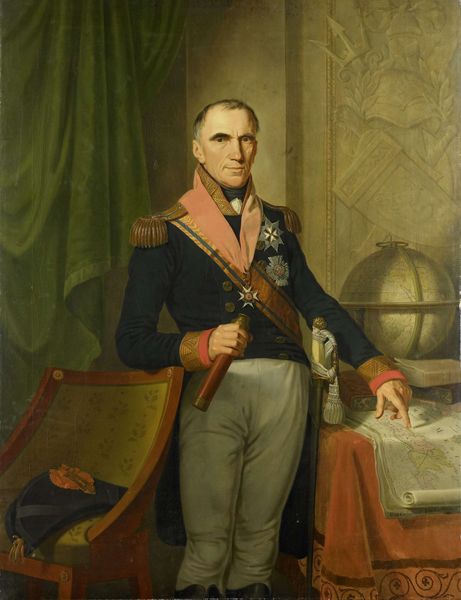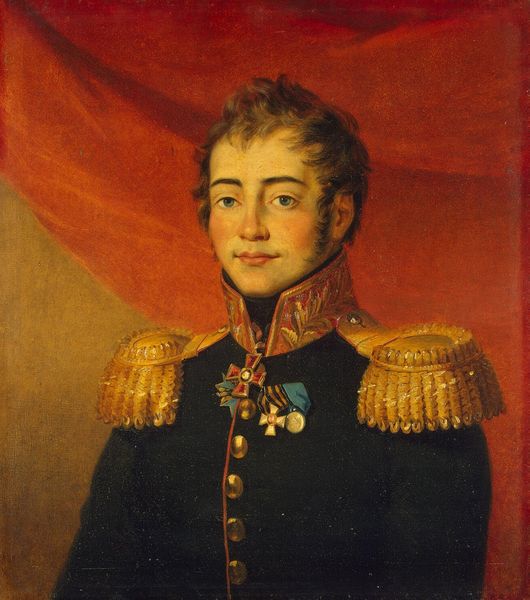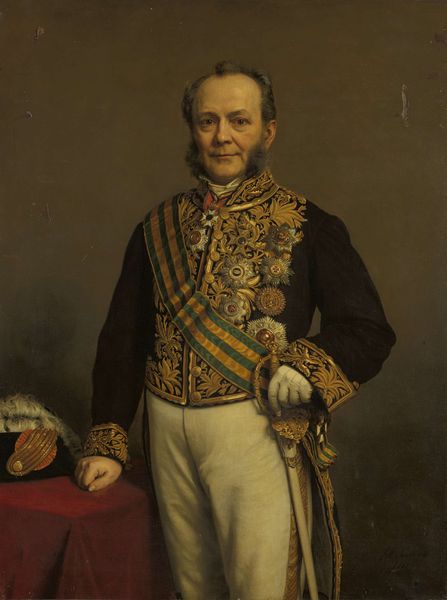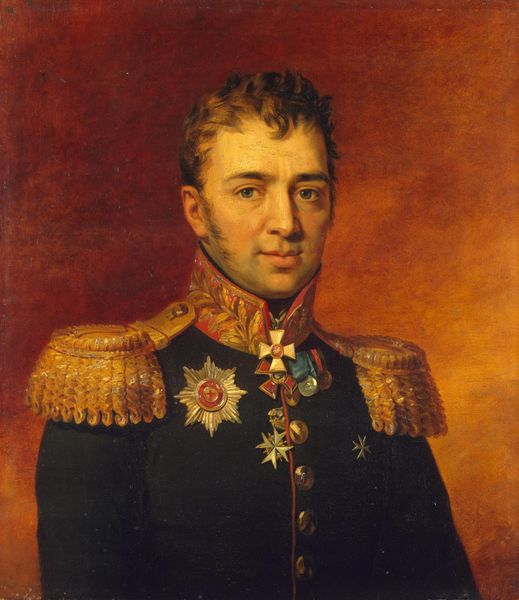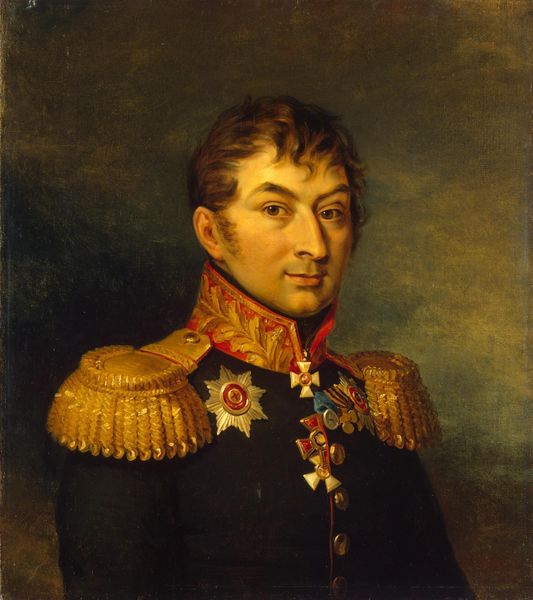
Portrait of Jan Jacob Rochussen, Governor-General of the Dutch East Indies 1845
0:00
0:00
nicolaaspieneman
Rijksmuseum
painting, oil-paint
#
portrait
#
painting
#
oil-paint
#
romanticism
#
history-painting
#
academic-art
Dimensions: height 119.5 cm, width 93 cm
Copyright: Rijks Museum: Open Domain
Curator: Right in front of us we have Nicolaas Pieneman's 1845 oil painting, "Portrait of Jan Jacob Rochussen, Governor-General of the Dutch East Indies", here on display at the Rijksmuseum. Editor: The embroidery is what first catches my eye, honestly. That’s labor right there – intense, repetitive labor, likely not done by Pieneman, or even Rochussen, I'd wager, but certainly *consumed* by them. The materiality of the status display is what sings to me first. Curator: It's hard to separate the man from the gilded cage he's built for himself, isn't it? He seems weighed down by the sheer material… density of it all, the expectation. There's a wistfulness in his eye, almost a shadow of melancholy despite all that ornamentation. Perhaps the artist has captured something beyond the outward trappings of power. Editor: It's a calculated melancholia, I think, meant to soften the hard edges of colonial rule, right? These portraits are rarely, if ever, about 'honesty,' but about crafting a specific narrative. Pieneman is using oil paint, layer upon layer, to build not just an image, but an ideology. How many hours did it take a weaver to craft the textile? Who determined that golden weave’s patterns? Curator: And yet, in romanticism there is always some gesture toward a higher emotional truth—but I get your point. In portraying Rochussen this way, Pieneman simultaneously affirms and questions the very foundations of his authority. It makes one wonder, doesn't it, about the human cost of such power, and whether Rochussen himself ever pondered the threads connecting him to the source. Editor: The oil itself is also a commodity of exploitation; the canvas made of who knows what. Every brushstroke represents the transformation of raw materials into something…more, but at what cost, exactly? Even the choice to represent him in oil, versus printmaking, for example, broadcasts an aura of rarefied expense and aristocratic uniqueness. The paint alone whispers of colonial networks. Curator: It seems you and I may find ourselves agreeing that this piece encapsulates both the glory and the burden of power. Seeing it through a materialist lens offers fresh perspectives on familiar narratives, helping us realize a dialogue with history that's as nuanced and multifaceted as Pieneman’s oil paints. Editor: Yes, and questioning traditional high art tropes allows one to delve deeper. To see past Rochussen the person, and witness the complex, interlocking structures of making, labor, and authority he materially embodied.
Comments
No comments
Be the first to comment and join the conversation on the ultimate creative platform.
